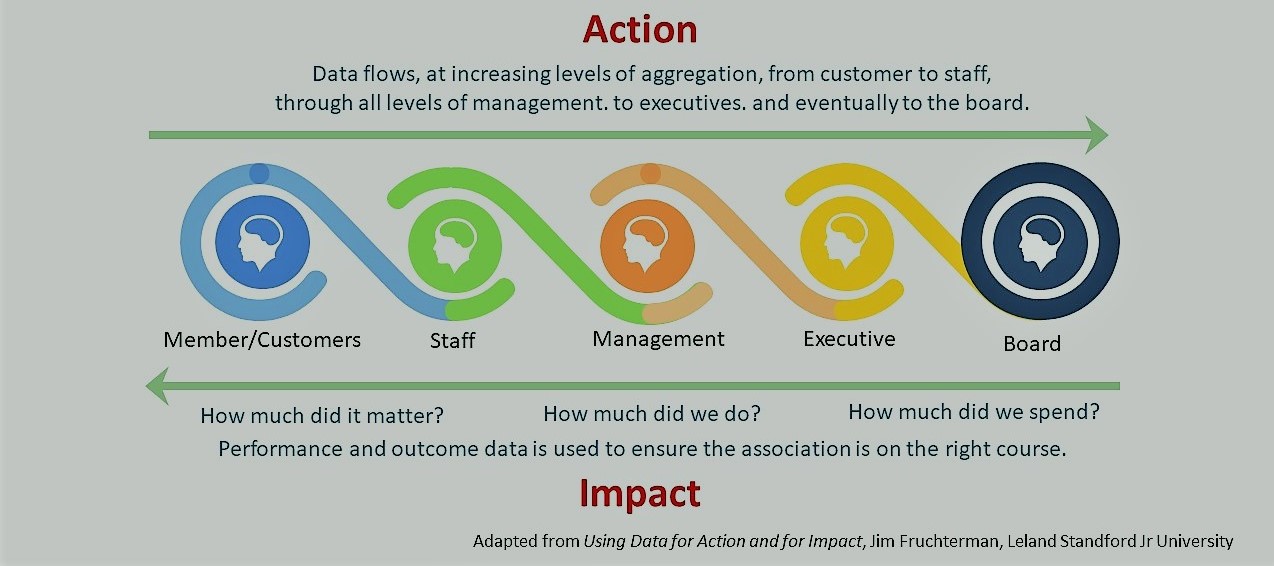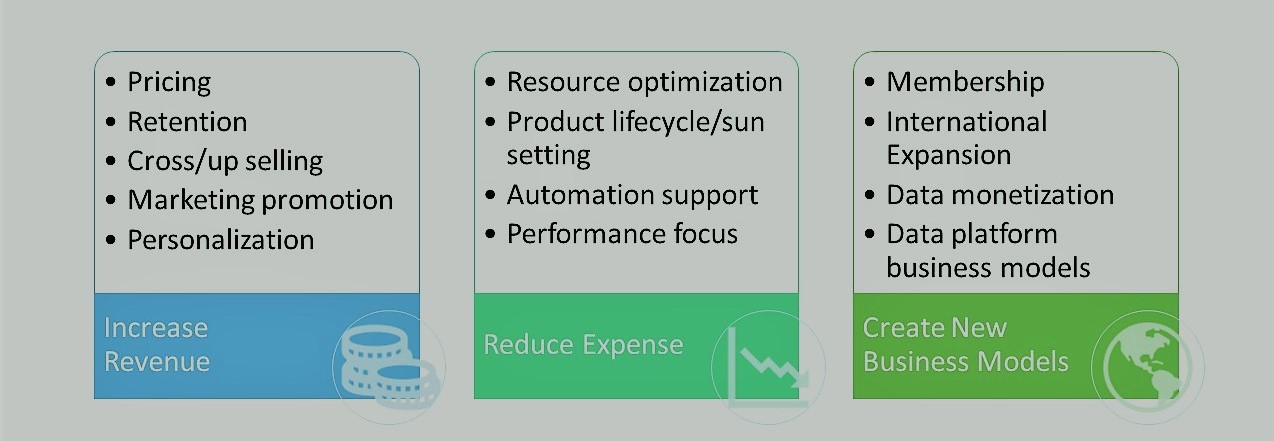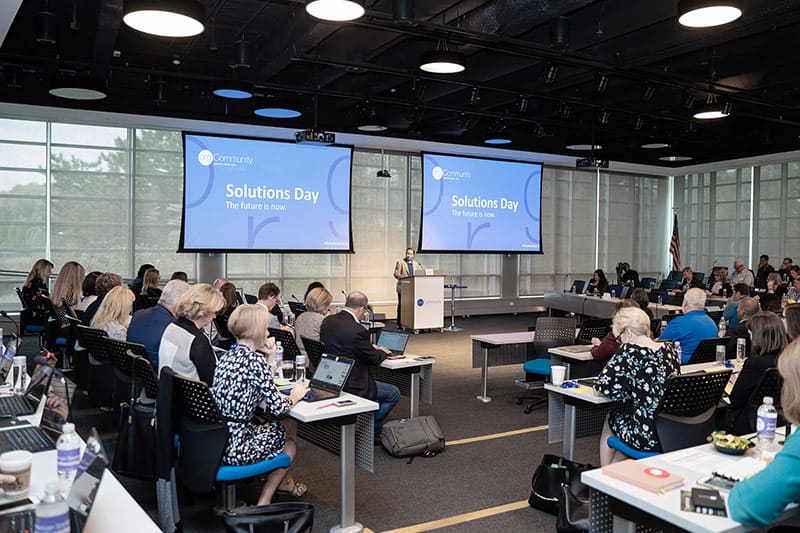
Can you guess the answer to this question?
Virginia (Ginni) Rometty, Executive Chairman of IBM, recommended making these critical marketing shifts within the next 18 months or risk being left in the dust:
- Move the focus from market segmentation to the individual customer.
- “Create systems of engagement” that go beyond reaching out to tracking brand and customer interactions over time and using that information to “maximize value creation at every touch point.”
- Promote authenticity and transparency by aligning brand and culture.
What year was it?
Surprisingly, Rometty made these remarks in February 2013. She was speaking to CMOs and CIOs at a leadership symposium. The topic was the impact of big data on business transformation. She also predicted that big data would be foundational to competitive advantage.
Although almost a decade has passed since Rometty gave this advice, most associations are not using big data for decision-making or marketing. That’s not surprising given that associations are not multibillion-dollar corporations. However, it is slightly unsettling that many organizations are still not using data to move closer to Rometty’s three goals or, in some cases, to regularly inform operations and strategy.
In recent conversations with association leaders, I’m hearing considerable uncertainty about what 2021 will bring. Having confidence in your ability to use data to answer complex questions is a good antidote to fears about a volatile business environment. The pandemic has certainly been an object lesson in the value of accurate information and scientific truth.
The ability to access and use facts and figures effectively is foundational to the .orgSource process of business transformation. Our paper, Achieving Organizational Transformation: Pathways to Success, describes how increasing member value by adapting a digital business model begins with having an objective picture of your association’s current status.
A Continuum of Increasing Value
Sharon Rice, .orgSource Managing Director of Business Strategy, is fascinated by the power of the information that surrounds us and its ability to clarify what can seem to confound. Her webinar, The Transformative Power of Data, outlines the importance of understanding how to find and analyze statistics that are often hiding in plain sight.
Rice, who served as vice president of strategy at APICS (the Association of Supply Chain Management) before joining the .orgSource team, compares the way data moves through an association to the path raw material travels along a supply chain. At each step in the process, value is added. “Data flows from our customers to the board at increasing levels of aggregation,” she advises.

Below is an example, which we can all now relate to, of how data-driven decisions evolve:
Following an organization’s first virtual conference, the meetings department staff review the statistics. They collect information about participation, demographics, session attendance, and ROI, and compare them with previous meetings. The facts and figures are passed on to managers and directors who develop sales and marketing strategies for future events based on those findings. Then, it falls to the executive team to identify challenges, opportunities, and other significant issues, and to present outcomes of the conference in a report to the board. As the big picture thinkers, the board uses that analysis to evaluate the overall impact of the meeting. They assess whether the event advanced the association’s goals and strategy, and they will use the recommendations to guide future decision-making.
Like a snowball rolling downhill, the data traveled a continuum from the micro to the macro level. Each group’s input gave it additional heft and meaning.
The Path From Identity to Connection
Our expanding ability to gather and analyze information follows a similar trajectory. “As I was putting my presentation together,” Rice comments, “it was interesting to consider how the data associations can access has changed over time.”
In the 1980s, the first personal computers made it possible to store and manipulate member demographics without high-level technical assistance. By the 90s, we were reaching beyond identity and into preference. Interest surveys and member assessments provided insight into what constituents valued and needed at a determined point in time. But these one-off evaluations quickly became stale.
By 2000, technology was advancing into the realm of behavior. E-commerce was shining a light on how customers engaged with products and services on an ongoing basis. We could predict buying patterns and exert influence by presenting options based on previous purchasing history. This transactional information forms the basis of big data.
Cloud computing brings us up to date. It propels us into the realm of connectivity. Web analytics, and other applications, increase the ability to explore browsing and buying behavior and to investigate the market response to various strategies. The association’s engagement with members becomes a two-way street. Members can enter their own data into the organization’s software and connect with each other using discussion forums and similar social platforms. These interactions provide yet another fertile source of first-hand information.
A Foundation for Digital Success
The breadth of this expanded reach is considerable. “Data can drive the business of association management, increasing the sophistication of operations and the acumen of staff,” Rice advises. “By understanding that power, associations can create processes that bring objectivity, knowledge, and nuance to decision-making.”

We can test offerings by raising or lowering prices, investigate cross-selling and upselling, assess the impact of segmentation, and augmentation. The data can tell us when to sunset products and how to create services that will maximize revenue.
Data can be used to identify an advantage in changing markets. We can explore options for international or internal expansion or discover how to monetize proprietary information. And most importantly, marketing automation adds the dimension of customization and engagement with members on an individual level.
However, Rice cautions, “Most associations are still working off an analog model. They may digitally deliver products, but those offerings have more in common with physical items. In contrast with the way that data platform business models like Facebook, Amazon, and Google constantly evolve based on customer feedback, they are static. I think moving toward the goal of a portfolio that reflects changing consumer demand is the future of associations.”
A Beautiful Question
It may be surprising to learn that becoming a data powerhouse doesn’t depend on technology. Even a supercomputer that fills a room the size of two tennis courts is useless unless you can ask the right question. Gathering data can seem confusing and unmanageable. But, Rice advises, when you ask the right questions, the direction becomes clear.
The most powerful questions open a dialogue. Asking “what if” instead of “why” allows groups to explore possibilities. Author, Warren Berger, describes the beautiful question like this: A beautiful question is an ambiguous yet actionable question that can begin to shift the way we perceive . . . and might serve as a catalyst to bring change.”
You can use a beautiful question to initiate a structured process of problem solving that moves from exploration to action. The beautiful question prompts a business question which, in turn, reveals the appropriate data questions. For example:
Beautiful question
What if we could provide ongoing, specific, personalized programs and support to our members to advance their careers and achieve their goals?
Business question
How do we gain an intimate knowledge of our members so that we can discern and provide what they need?
Data questions
What data do we currently have available to us?
What data would we need to acquire?
How can we secure that data?
Do we have the tools we need to harness and leverage the data?
Do you need to hire a data analyst to begin this type of problem solving? The answer is no. Rice notes that the tools are available to everyone. “Associations may imagine that they don’t have sufficient data in their current systems,” Rice says. “But most organizations have a wealth of untapped information, it’s simply a matter of knowing how to find it.”
If your group is eager to move toward the benchmarks that Virginia Rometty set for corporations seven years ago, a consultant can jumpstart the process. Call on .orgSource when you are ready to make data your competitive advantage; we can help.


